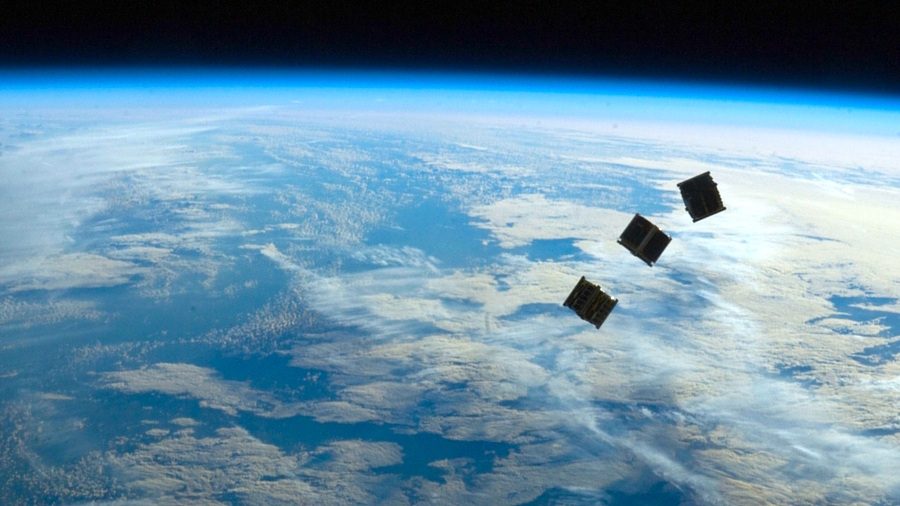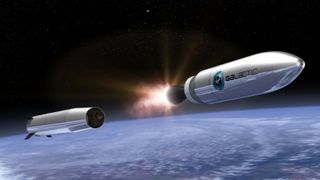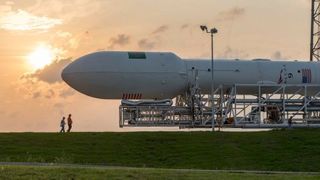The orbital internet: Could fleets of CubeSats bring global web access?
For the majority of the world, regular net access is still a pipe dream

Internet access is cheap, fast and available everywhere. Mobile phone companies are throwing unlimited gigabytes at us, 4G (and 5G) is making mobile web access ever faster, and it's increasingly accessible from everywhere you go.
If only that were true. Accessing the web may be simple in wealthy urban areas of the globe, but for the other four billion people on the planet it's an occasional, expensive luxury dogged by painfully slow page loads and frequent signal drop-outs.
The internet's next step?
The internet is still under construction, and it looks as if its next step – after undersea cables and fibre-optic networks for cities – could be satellite. Although satellites carry barely 1% of global web traffic now, there's a space race on to increase that to perhaps as much as 10%.
The major players? The Richard Branson-backed OneWeb and Elon Musk's SpaceX, both of which want to put hundreds of low-flying satellites into orbit to give everyone on Earth an internet connection. It's been unsuccessfully tried before by the Bill Gates-backed Teledesic. Can it work second time around?

Why internet by satellites?
Satellites are generally thought of as bad for internet access, and a last resort used by remote areas, such as island communities. Although over 2,000 satellites around Planet Earth handle TV, imaging, weather, Earth observations and GPS, they cost £45 million (around $65 million, AU$94 million) per launch and host precious little two-way traffic. There's a latency issue – a half-second delay makes video calling almost impossible, for example.
However, the tech is changing. The size and cost of satellites is drastically decreasing, with so-called cubesats, nanosats and smallsats – some as little as 10 x 10 x 10cm – costing about £40,000 (around $57,000, AU$83,000) to make and as little as £85,000 (around $122,000, AU$177,000) to launch. And while huge, pricey satellites sit in a geosynchronous orbit 22,236 miles from Earth, these smallsats are designed to fly in constellations in a very low-Earth, Sun-synchronous orbit, as low as 350 miles up.
The result is far less latency (no more than fibre-optic cables) and the ability to provide web access to the remotest of areas (think sub-Saharan Africa and Amazonian Brazil through to remote Canada and the Australian outback), but achieving constant line of sight requires far more satellite launches. And that's where SpaceX and Virgin Galactic come in.
Are you a pro? Subscribe to our newsletter
Sign up to the TechRadar Pro newsletter to get all the top news, opinion, features and guidance your business needs to succeed!

What is OneWeb planning?
OneWeb plans to launch 700 satellites into low-Earth orbit – mostly on the back of Virgin Galactic's (one of its investors) LauncherOne rocket, which takes off from under the wing of a Boeing 747. OneWeb's investors include the Virgin Group itself as well as Qualcomm, Airbus, Coca-Cola, Intelsat and Hughes Network Systems.
So far it's inked a deal with Virgin Galactic to launch the first 39 of its satellites on LauncherOne, with an option for 100 more (though it might also launch on SpaceX rockets). Its satellites are being built by Airbus, and should start launching in 2018 to sit about 500-750 miles out. At 6Gbps apiece, 700 satellites would equal a total capacity of about 4.2Tbps.

What about SpaceX?
PayPal founder and owner of SpaceX, Elon Musk, plans to launch a constellation of 4,000 satellites around the globe (also 500-750 miles up) to beam a Wi-Fi signal to the most remote regions, in doing so turning his company into a global communications provider. However, the cost of creating such a vast network makes it just as ambitious as Musk's stated aim of one day helping colonise Mars.
It's all about the cost of launch (on SpaceX's Falcon 9 rocket) and the speeds of the antennas on the satellites, but the ever-ambitious Musk has even talked up using laser data transfer. NASA is currently testing Optical Payload for Lasercomm Science (OPALS), which has so far managed to send 50 megabits per second from the ISS to California. With the help of Google, SpaceX is planning something big for 2020, but so far it's still at the conceptual stage.
Jamie is a freelance tech, travel and space journalist based in the UK. He’s been writing regularly for Techradar since it was launched in 2008 and also writes regularly for Forbes, The Telegraph, the South China Morning Post, Sky & Telescope and the Sky At Night magazine as well as other Future titles T3, Digital Camera World, All About Space and Space.com. He also edits two of his own websites, TravGear.com and WhenIsTheNextEclipse.com that reflect his obsession with travel gear and solar eclipse travel. He is the author of A Stargazing Program For Beginners (Springer, 2015),
Most Popular



